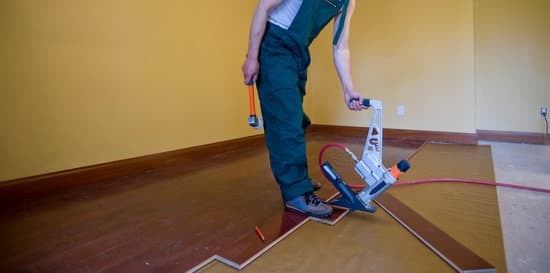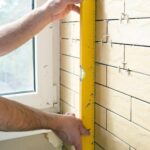Do it yourself home well repairs and improvements can be a rewarding and cost-effective way to maintain the water supply in your home. Taking on these projects yourself can save money and give you a sense of accomplishment.
In this article, we’ll explore the benefits of DIY well repairs and improvements, as well as provide valuable tips and guidance for assessing the state of your well, the tools and equipment needed, step-by-step guides for testing and repairs, as well as safety precautions.
There are many signs that indicate issues with a home well, such as low water pressure, unusual noises, or murky water. Identifying these signs early on can help prevent more significant problems down the line. By learning how to assess the state of your well, you can stay ahead of potential issues and address them proactively.
In order to effectively take on DIY well repairs and improvements, having the right tools and equipment is crucial. From submersible pumps to pressure switches, having a comprehensive list of what you need will ensure that you can tackle any project with confidence. Stay tuned as we provide detailed information on necessary tools and equipment for various repair and improvement projects.
Assessing the State of Your Well
When it comes to maintaining the functionality and safety of your home well, it’s crucial to be aware of potential signs that indicate the need for repairs or improvements. By identifying these signs early on, homeowners can address issues promptly and prevent more significant problems in the future. Here are some common indicators that your well may need repair or improvement:
– **Low Water Pressure**: If you notice a decrease in water pressure when using faucets, showers, or other water outlets in your home, it could be a sign of a problem with your well system. Low water pressure may be caused by issues such as clogged pipes, pump malfunctions, or water leaks within the well.
– **Unusual Noises**: Unusual sounds coming from your well system, such as grinding, rattling, or knocking noises, can signal mechanical problems that require attention. These noises may indicate issues with the well pump, motor, or other components that need to be addressed through repair or replacement.
– **Murky Water**: If the water coming from your well appears cloudy, discolored, or has particles floating in it, it’s a clear indication that there may be contaminants or sediment entering your water supply. This can affect the quality and safety of your drinking water and should prompt homeowners to take action.
By being attentive to these warning signs and promptly addressing any issues that arise with your home well system, homeowners can ensure a safe and reliable supply of water for their household needs. Regular monitoring and maintenance can prevent more extensive damage to the well and associated equipment while also safeguarding the quality of your drinking water.
Tools and Equipment Needed for DIY Well Repairs and Improvements
Essential Tools for Well Repairs
When it comes to tackling DIY well repairs and improvements, having the right tools at your disposal is crucial. Some essential tools for well repairs include a pipe wrench, pliers, wire brush, Teflon tape, and a hacksaw. These tools will come in handy for tasks such as replacing pipes or fittings, addressing leaks, and conducting basic maintenance on the well system.
Specialized Equipment for Well Improvement Projects
In addition to basic hand tools, some DIY well improvement projects may require specialized equipment. For example, installing a water filtration system may necessitate the use of PVC solvent cement, a tubing cutter, and a pressure gauge. It’s important to assess the specific requirements of the project at hand and ensure that you have all the necessary equipment before getting started.
Safety Gear for Working With Wells
Working on well repairs and improvements also requires utilizing appropriate safety gear. This may include gloves to protect your hands from sharp edges or chemicals, safety goggles to shield your eyes from debris or splashing water, and a respirator mask if you’re dealing with potentially harmful fumes or contaminants. Prioritizing safety by wearing the right protective gear can help prevent accidents and injuries during DIY well projects.
By having access to these tools and equipment and taking the proper safety precautions when working on your well system, you can effectively address repair needs and implement improvements with confidence. Investing in quality tools and safety gear is an essential part of successfully completing DIY projects while prioritizing personal safety and wellbeing.
Step-by-Step Guide to DIY Well Water Testing
A crucial aspect of maintaining a home well is ensuring the safety and quality of the water it provides. Conducting regular DIY well water testing can help homeowners identify any potential issues and take necessary actions to address them. With the right tools and knowledge, testing your well water can be a straightforward process that provides peace of mind for you and your family.
Gathering the Necessary Tools and Materials
Before getting started with the actual testing, it’s essential to gather all the required tools and materials. This typically includes a clean container for collecting water samples, well water test kits, gloves, and labels for proper sample identification. Well water test kits are readily available at hardware stores or online, and they often include tests for pH levels, nitrates, total dissolved solids (TDS), bacteria, and other contaminants commonly found in well water.
Collecting Water Samples
To obtain accurate test results, it’s important to collect water samples properly. Begin by running an outdoor faucet attached to the well for several minutes to flush out stagnant water from the system. Then, sterilize the faucet with a flame or disinfectant before filling your clean sample container with well water. Be sure to fill it up entirely while avoiding any contact between the container and the faucet to prevent contamination.
Following Testing Procedures
Each test included in the kit will come with specific instructions that should be followed carefully. This may involve adding reagents or solutions to the water sample or using test strips provided in the kit. Some tests may require incubation periods before results can be read accurately. It’s important to read and understand each step of the testing procedures thoroughly to ensure accurate results.
By following this step-by-step guide to DIY well water testing, homeowners can take proactive measures in ensuring their well water is safe for consumption. Regular testing allows for early detection of any potential issues with well water quality, ultimately contributing to a healthier living environment for everyone in your household.
Common DIY Well Repairs
Having a well pump problem can be frustrating for homeowners, especially when it affects their access to clean and reliable water. Fortunately, many well pump issues can be addressed through simple do-it-yourself repairs. One common problem is a malfunctioning impeller, which can lead to decreased water pressure or no water flow at all. Replacing the impeller is a straightforward repair that can be done without professional help.
Another issue that homeowners may encounter is a faulty pressure tank. Signs of a faulty pressure tank include rapid on-off cycling of the pump or irregular water pressure. To fix this problem, homeowners can check the tank’s air pressure and adjust it as needed. If the tank is waterlogged, it may need to be replaced.
It’s important for homeowners to understand that while many well pump issues are DIY-repairable, some problems may require professional assistance. For instance, if there are electrical issues with the well pump or if there are significant leaks in the system, it’s best to consult a professional well contractor for guidance.
| Well Pump Issue | Solution |
|---|---|
| Malfunctioning impeller | Replace the impeller with a new one. |
| Faulty pressure tank | Check and adjust the tank’s air pressure; consider replacing if waterlogged. |
DIY Well Improvement Projects
Installing a water filtration system for your well water is an excellent DIY improvement project that can significantly enhance the overall quality of your water. Not only does it remove contaminants and impurities, but it also provides you with cleaner, safer drinking water. When selecting a water filtration system for your well, it’s crucial to consider the specific contaminants present in your water supply and choose a system that effectively targets those impurities.
There are various types of water filtration systems to choose from, including activated carbon filters, reverse osmosis systems, and UV purification units. Each type has its unique mechanisms for removing different contaminants from the water. Additionally, make sure to select a system that is suitable for the flow rate and volume of water in your household to ensure optimal performance.
Once you’ve chosen the right water filtration system for your well, the installation process can be straightforward if you have some basic plumbing skills. However, it’s essential to follow the manufacturer’s instructions carefully and consult local plumbing codes if necessary. In some cases, you may want to hire a professional plumber to ensure that the system is installed correctly and efficiently.
Installing a water filtration system as a DIY project can improve the quality of your well water by reducing or eliminating harmful substances and impurities. It not only benefits your health but also adds value to your property. With proper installation and maintenance, a well-designed filtration system can provide clean and safe drinking water for years to come.
| Water Filtration System Types | Considerations |
|---|---|
| Activated Carbon Filters | Effective for removing chlorine, volatile organic compounds (VOCs), and bad tastes/odors |
| Reverse Osmosis Systems | Ideal for removing dissolved solids, heavy metals, nitrates/nitrites |
| UV Purification Units | Great for disinfecting bacteria, viruses, and other microorganisms |
Maintenance Tips for Home Well Owners
Maintaining a home well is essential to ensure the continuous and safe supply of water to your household. By performing regular maintenance tasks, homeowners can prevent costly repairs and ensure that their well system operates efficiently. Here are some important maintenance tips for home well owners:
- Regular Inspection: Schedule periodic inspections of your well to check for any signs of damage or wear. Look for leaks in the pipes, cracks in the well casing, or any unusual odors or sounds coming from the well.
- Well Water Testing: Conduct routine testing of your well water to evaluate its quality and safety. Test for contaminants such as bacteria, nitrates, or other pollutants that may affect the water’s potability.
- Pump Maintenance: Maintain and service the well pump according to the manufacturer’s recommendations. This may include lubricating moving parts, checking electrical connections, and ensuring that the pressure switch is functioning properly.
In addition to these routine maintenance tasks, it’s important for homeowners to be aware of any changes in their water supply or the performance of their well system. If you notice a sudden drop in water pressure, a change in water color or taste, or any other unusual occurrences, it’s advisable to seek professional assistance to address these issues promptly.
By staying proactive with regular maintenance and addressing any potential problems early on, homeowners can keep their home wells in good shape and ensure a reliable supply of clean and safe water for their household. Remember that when it comes to maintaining a private well, prevention is key to avoiding major repairs in the future.
Safety Precautions for DIY Well Repairs and Improvements
In conclusion, while DIY home well repairs and improvements can be a cost-effective and rewarding endeavor, it is crucial to prioritize safety throughout the process. Taking on projects such as testing well water quality, fixing well pump issues, installing water filtration systems, and conducting maintenance tasks requires proper precautions to prevent accidents or injuries.
By following essential safety tips and guidelines, homeowners can ensure that their DIY well projects are not only successful but also carried out in a secure and responsible manner.
One of the most important safety precautions when working on home well repairs and improvements is to always shut off the electrical power to the well system before starting any work. This minimizes the risk of electrical shock or other electrical hazards. Additionally, wearing appropriate protective gear such as gloves, goggles, and sturdy footwear can help prevent injuries from sharp tools or chemicals commonly used in well repair and improvement projects.
Furthermore, maintaining proper ventilation while working with chemicals or conducting tasks in enclosed spaces is essential for avoiding hazardous fumes or air quality issues. It’s also advisable to have a thorough understanding of the specific tools and equipment being used for each project and to follow manufacturer instructions carefully. Ultimately, prioritizing safety ensures that DIY home well repairs and improvements can be completed effectively without compromising the well-being of homeowners or their property.
Frequently Asked Questions
What Should I Fix First in My House?
When deciding what to fix first in your house, it’s important to prioritize any issues that can cause long-term damage or pose safety risks. This could include things like water leaks, electrical problems, or structural damage.
It’s also a good idea to address any issues that affect the comfort and livability of your home, such as broken appliances or HVAC systems.
What Is the Most Common Home Repair?
The most common home repair tends to be related to plumbing issues. This could be anything from a leaky faucet or running toilet to more serious problems like clogged drains or burst pipes. Since plumbing is a crucial part of any home, it’s no surprise that it often requires attention and maintenance.
What Kind of Things Do People Repair by Themselves?
People often choose to repair smaller, simpler things by themselves in order to save money and feel a sense of accomplishment. This could include tasks like painting walls, fixing minor electrical issues (like replacing a light switch), repairing furniture, or even doing basic landscaping work.
By taking on these projects themselves, homeowners can learn new skills and gain a greater understanding of how their homes work.

I’m thrilled to have you here as a part of the Remodeling Top community. This is where my journey as an architect and remodeling enthusiast intersects with your passion for transforming houses into dream homes.





